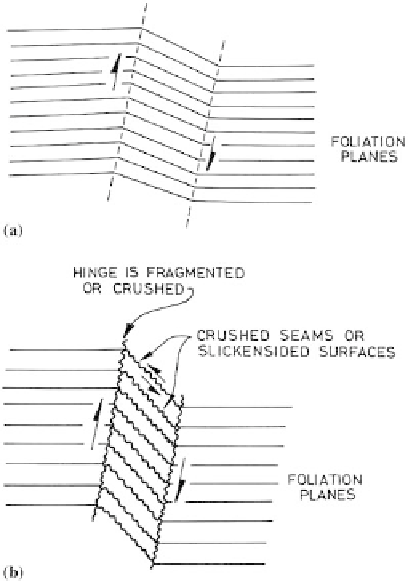Environmental Engineering Reference
In-Depth Information
Figure 3.18.
Formation and nature of kink bands.
Dam in New Zealand. The location and treatment of some of these shears during con-
struction of the dam are discussed in Section 17.8.3.
3.4.5.2
Kink bands
Schistose rocks often also contain “kink bands” within which the foliation layers have
been displaced to form features similar to monoclinal folds but with sharp, angular hinges
(Figure 3.18a).
In some cases continuous near-planar joints have developed along the hinges and the
foliation layers within the band have parted to form open or infilled joints. In other cases
crushed seams have developed along the hinges and the foliation layers within the band
are either slickensided or partly crushed (Figure 3.18b). Such kink bands can be consid-
ered a special class of fault.
3.4.5.3
Mica-rich layers
Some schists contain layers or zones which consist almost entirely of micaceous minerals,
e.g. biotite, muscovite, sericite or chlorite. Such layers or zones are usually much weaker
than the normal schist. It is good practice to consider them as individual defects of low
shear strength.
3.4.6
Stability of slopes formed by schistose rocks
Landsliding is relatively common on slopes underlain by schistose rocks. Well-known
examples are the Madison Canyon Rockslide in Montana, U.S.A. (Hadley, 1978), the


